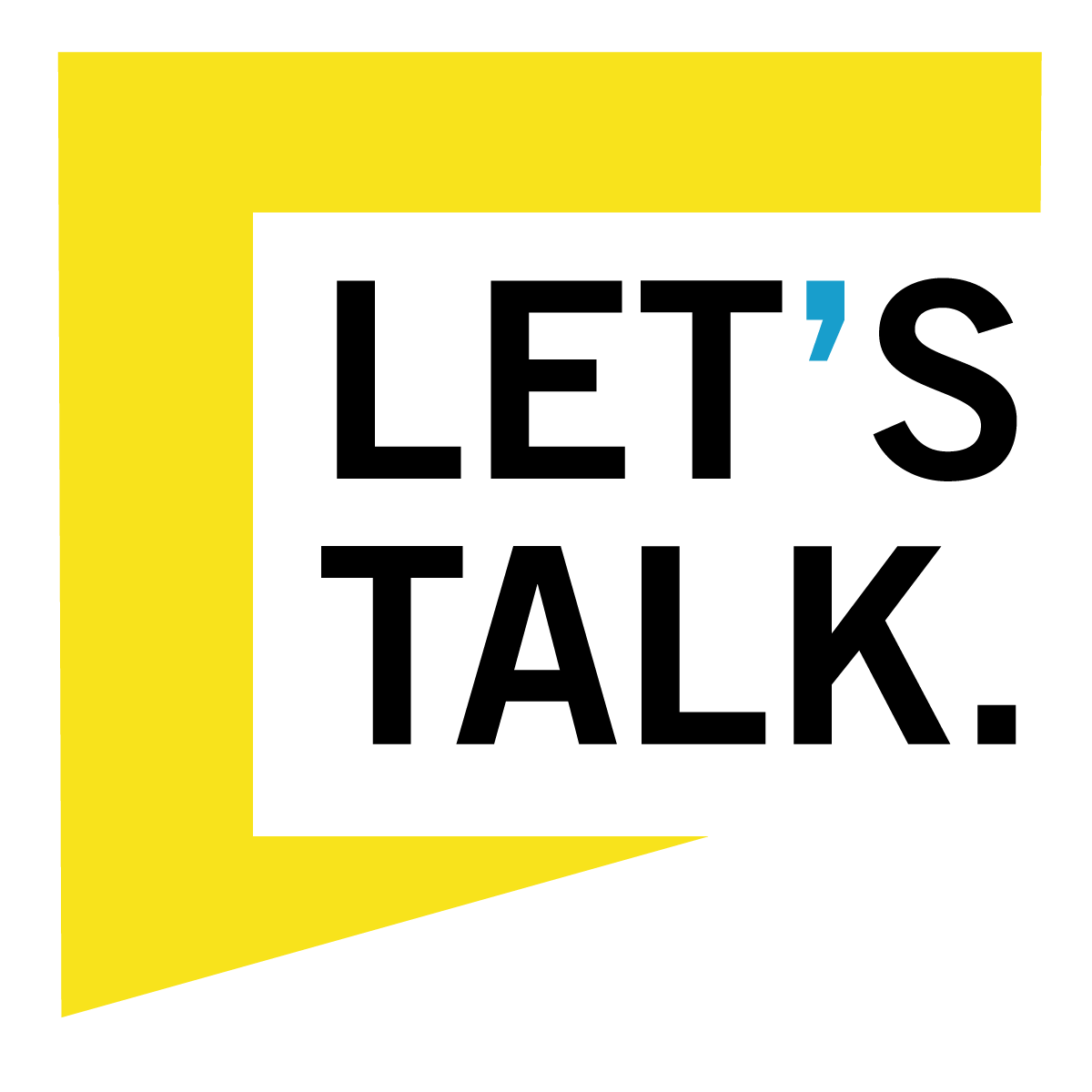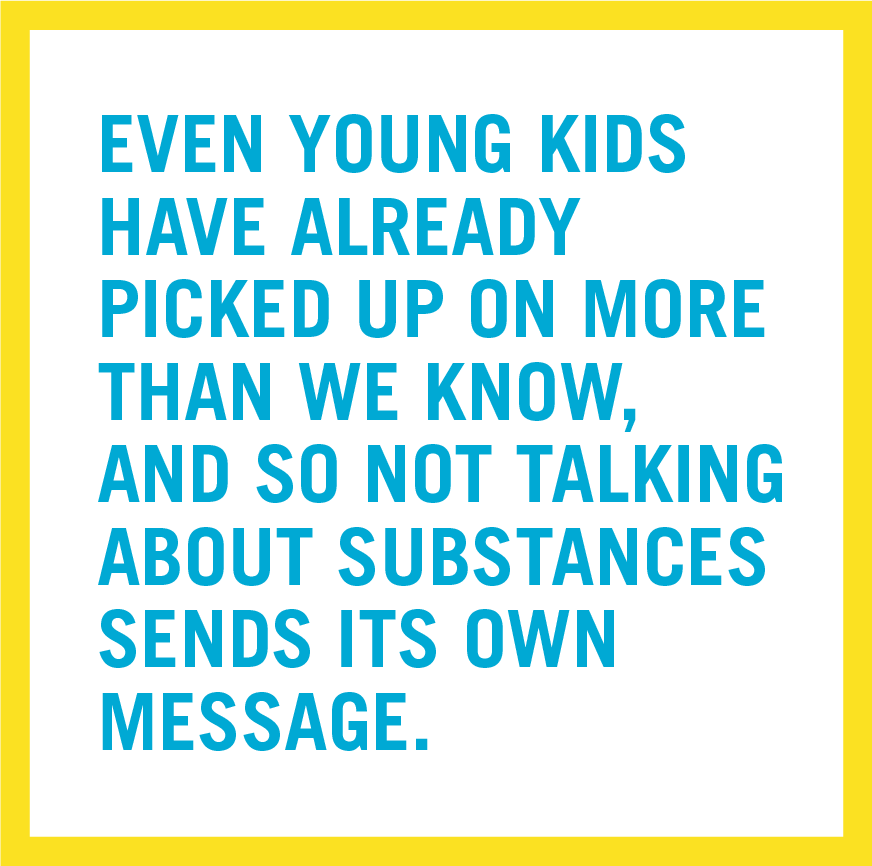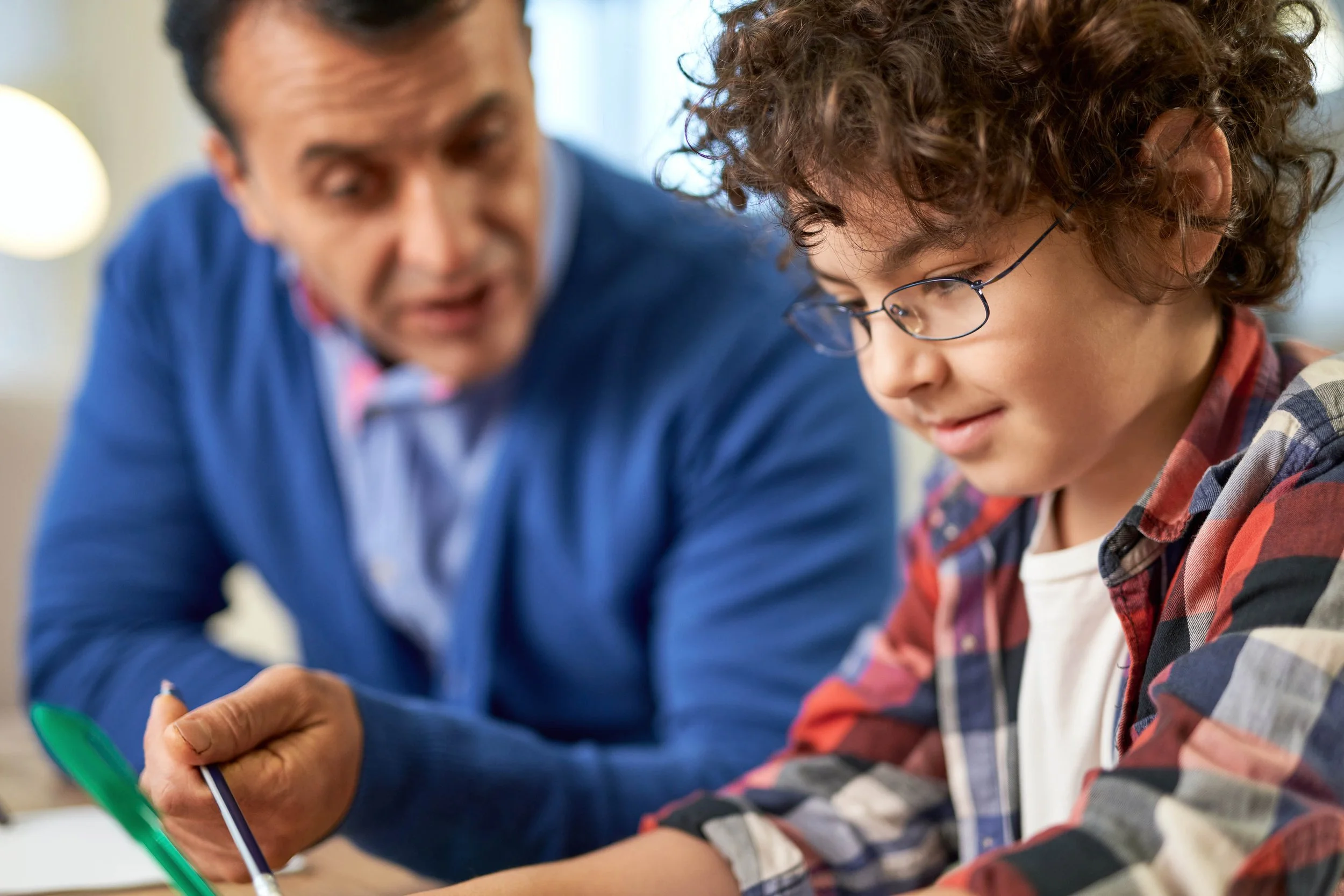ELEMENTARY AGES
Your Elementary School Aged Child
Your elementary aged child is busy with learning to read, making friends and enjoying recess. They’re still a little kid. But they are absorbing the messages around them through media and the behaviors of older kids and adults in their life.These years shape their attitudes and behaviors related to substances. As a parent of an elementary child, these years also lay the foundation for a trusting, honest, connected relationship that will carry you through difficult conversations in the future. It will be helpful to read through all of the other sections of the website to be prepared, but in this section we explore how the best prevention starts early.
Setting the Stage
The foundation for your relationship with your future teen is being established right now while they are still a little kid. Think forward to when your kid is 16 years old. What do you want them to know about your relationship? Do you want them to trust you, to feel that they can go to you for support, to know that their safety is what is most important, to believe that they will always be loved even if they make mistakes? Now is the time to send those messages that will carry you through the teen years.
-
The research is clear on this: Parents matter. Parental style, monitoring, and the way that parents model behavior all have an impact on underage substance use. Establishing a relationship with open communication and trust are important elements of early prevention.
-
The most effective parenting style for positive outcomes is authoritative, which means that parents set rules, boundaries, and high expectations, but they also parent with warmth, nurture, and support to help kids meet those expectations. Kids raised in this way tend to have higher self-esteem, and be happier, more capable, and satisfied later in life.
-
This refers to the way that parents set rules, give structure, and monitor a child’s behavior. Studies show that parental monitoring is protective against underage substance use, and that youth who perceive low levels of monitoring by their parents are more likely to engage in higher risk activities. Monitoring does not mean that you can’t trust your child or foster age-appropriate independence. Kids need to spread their wings to grow and thrive. But parental monitoring sets boundaries and expectations, and then allows for independence within a supported structure.
-
We may think they are “too young to understand,” but our kids are absorbing the world around them and learning all the time. They pick up on the behavior of the adults around them, including how adults relax after a work day or have fun with their friends on the weekends. Right now is when they are forming their understanding of how they should think and behave when they get older. Think about what messages your children are already receiving, and what they are already learning. For more on how parental modeling impacts our kids, including at youth events, check out Raising the Bar. rtbmarin.org
-
Communication with your child now sets up your patterns of talking, listening, and building trust for the future. When we listen deeply to our kids, they feel that attention and care. When we are open to discuss talk about tough topics, they learn that they can come to us in tough times. When weyou validate their feelings, even if they are uncomfortable or hard, they learn that we you will be there to hold harder feelings down the road. When you pinky promise that you won’t tell anyone about your 4th graders’ crush, keep that promise. Your child will remember this trusted communication (and they will also remember a broken promise).
-
You can help your child learn now to trust their feelings, and also learn how to solve the problems that arise around those feelings. At this age, it may be that your child doesn’t want to wear a coat even though it’s super cold outside. Instead of forcing the coat, you can tell them you hear them when they say they aren’t cold and that maybe we’ll bring one for later just in case, and only if they want it. But you’ll be prepared. This translates to later years when your teen will be able to recognize and validate their own feelings, and also problem solve around them. For example, if as a teen they are in a situation with peers that just doesn’t feel right, they’ll be more likely to listen to that feeling and get themselves out of that situation.
Talking With Your Elementary Age Child
We know that good prevention starts early, before substances are accessible and attractive to kids. By nine years old, children already view alcohol in a more positive light, and by age 12, 10% of kids have already tried alcohol. By age 15, this number jumps to 50%. Even young kids have already picked up on more than we know, and so not talking about substances sends its own message.
-
Yes, we can lay the foundations when our kids are this young! This is a good time to talk about being healthy and taking care of our bodies and our health. It’s also important to talk about items in the home that may not be safe, like cleaning products, and taking medications that are only given to them by the doctor or by you. You can also express pride and celebration when they take responsibility or make good decisions in their little lives. These habits and routines will grow into bigger responsibilities and bigger decisions as they grow up.
-
Around age 5-8 you can introduce the word drug and explain that there are drugs that can help you and those that can hurt you. Find teachable moments when you’re out in the world or watching tv, and use those to start simple conversations (It looks like you are curious about that. Do you have any questions?) At this age, too much information can be overwhelming, so keep it simple and honest. Answer only the question that has been asked.
-
Around age 9-12, your kid is entering the tween years, and this is a time when they are fluctuating between the safety and security of home and family, and the excitement of exploring the world independently. Emotions start to fluctuate as well. (see Puberty?) During this phase, it’s important that you are having a dialogue and not a lecture, and that you maintain warmth and openess. You can start by listening, especially with an older elementary kid– what do you already know about drugs? You can also talk about specific drugs at this point, starting with the most common ones for teens to try early on, which are alcohol, tobacco and cannabis. Research together what you don’t yet know. Those teachable moments, on television or out in the world, can now be more substantial opportunities for discussion. What do you think about that? How do you think you would you react in that situation?
-
You are your kids’ parent or caregiver (?) and you know them best, so this is just a guide and not a definitive response. How might we answer the question, What is a Drug? Let’s look at a response when the question comes from our 4 year old, our 8 year old, and our 11 year old.
4 year old:
A drug is a medicine that we only take when the doctor or I give it to you.8 year old:
A drug is something we can take to help us feel better, like a medicine. But a drug can also mean something that can hurt kids and make them really sick. Cigarettes are a drug, for example.11 year old:
A drug can refer to medication we take, but often drugs refer to things like cigarettes and alcohol, which can make young people sick and change the way your brain and body work.Remember– you are just asking the question in front of you. No need to elaborate. Chances are that especially older kids will follow up with the next question.
Navigate All Of The Let’s Talk Content In One Place
This includes Mental Health, Adolescent Development, Substances, and What You Can Do as a caregiver.


